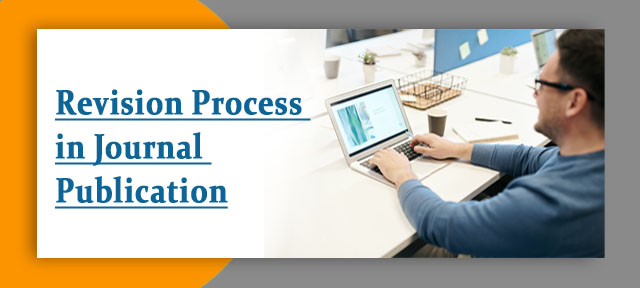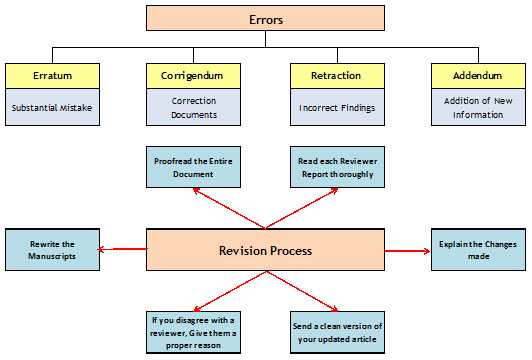Academic publication errors occur for a variety of causes. They can vary from basic typos to deliberate manipulation of findings or outcomes. How these errors are dealt with is primarily determined by their severity or extent.

What are the types of Errors in Journal Publication?
- Erratum – An erratum is a warning issued by a journal when it makes a substantial mistake that may affect the work of writers.
- Corrigendum – If the author makes a serious mistake, the author must sign the corrigendum (corrections document).
- Retraction – If the findings are found to be incorrect, all co-authors must sign a retraction explaining the mistake and how it influenced the conclusions. This is the most serious form of mistake since it would be submitted for publication.
- Addendum – An Editorial Expression of Concern may be included in an addendum if any new information about a paper is written. It is attached to articles that the editorial staff believes need further detail to be understood.
How should writers correct the errors in Manuscripts?
- Changes should be detailed and explained in the revision
- Disagreement must be clarified and backed by references or claims based on evidence and hypotheses that have been developed.
- Citations should include not only the author’s writings but also well-cited articles in the relevant field of study.
- Follow the editor’s description in the decision letter if the reviewers’ statements are inconsistent.
- Unless the paper is a direct answer to a specific article, the abstract and conclusions do not contain references.
- There should be no more than 10 figures and 2-3 tables in the revised paper.
- The revision notes should justify the changes and include specific lines, figures, and table numbers to show where changes were made.
- The revision text should be double-spaced with continuous line numbers, and changes should be highlighted.
Revision Process
The basic goal of the review process is to assess the importance and scientific rigor of a submitted text. The authors improve the content of the paper and satisfy the journal’s criteria by making changes to the manuscript as requested by reviewers and editors.
How to revise the Journal Article?
- The first decision is almost always to rewrite the manuscripts.
- It is important to proofread the entire document once again to ensure consistency and eliminate any remaining or newly introduced errors. It is to hire competent academic or science proofreaders who can assist you in polishing your language and formatting.
- When writing your updated paper, you must read each reviewer’s report thoroughly and respond to all of the reviewer’s comments and requests.
- Explain what you have edited and where it is edited in the manuscript at each point. Your answers should be justified, and any supplementary information should be included in the manuscript.
- If you disagree with a reviewer, be very straightforward on why you believe you are correct and they are incorrect.
- Send a clean version of your updated article as well as a marked-up version that demonstrates the improvements you made.
Conclusion
Responding to a mistake in a published document is a difficult and time-consuming procedure for all concerned. So, Follow the above Guidelines to correct & revise the Research Manuscript for Successful Publication.


